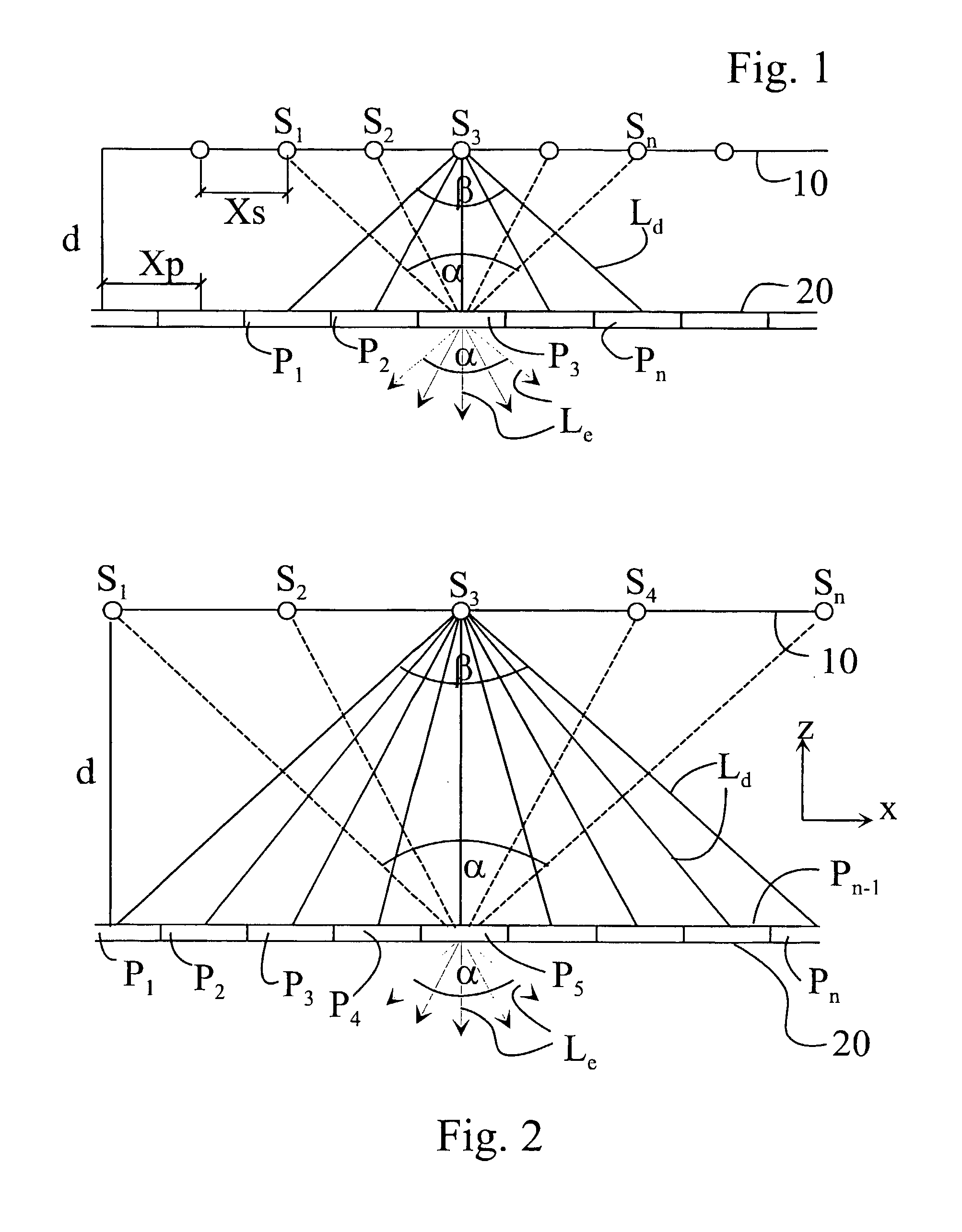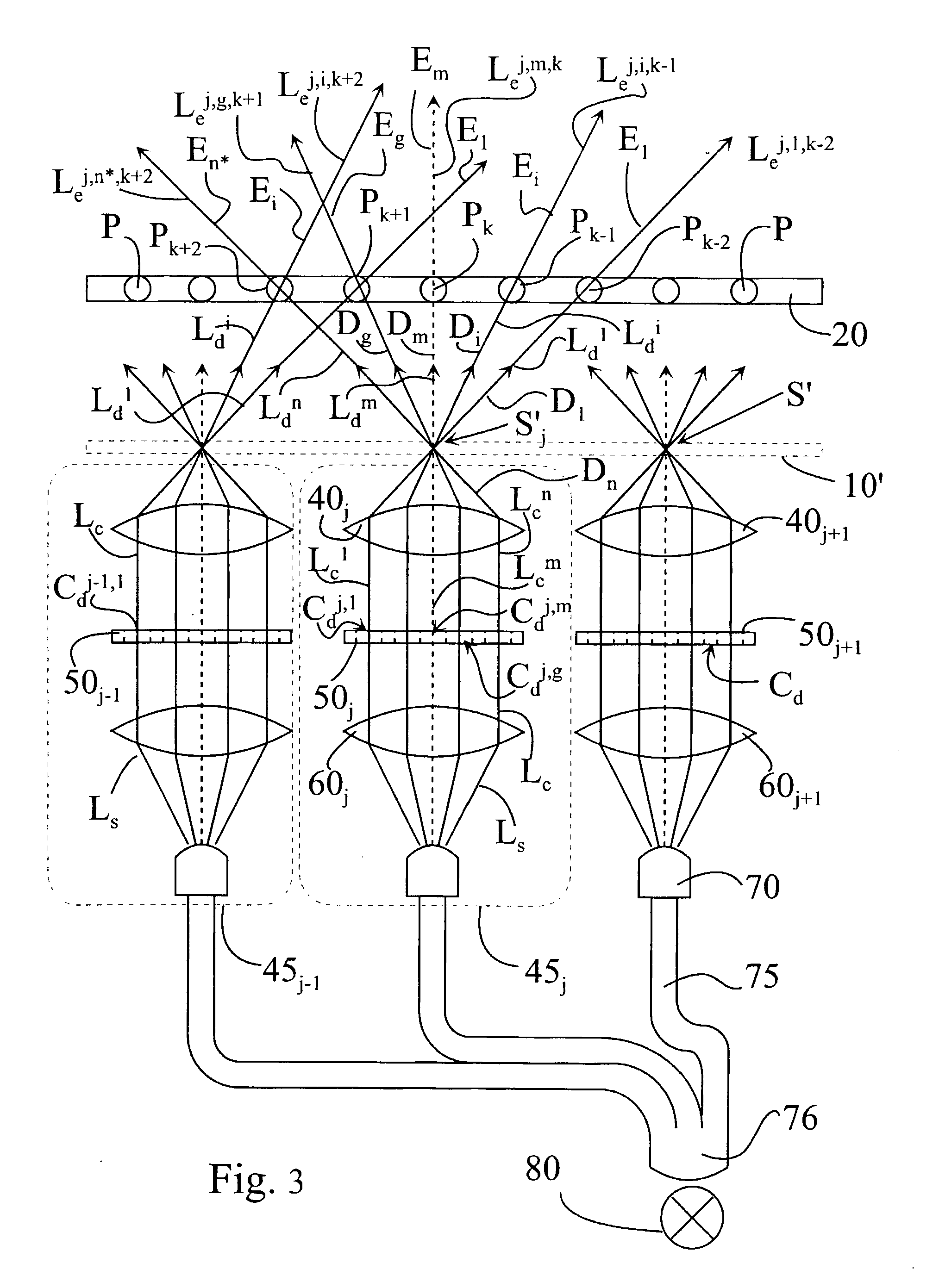Method And Apparatus For Generating 3D Images
a technology of 3d images and apparatus, applied in the field of apparatus for displaying 3d images, can solve the problems of unfavorable crosstalk, unfavorable image perception, uneven total intensity shown in fig. 7c,
- Summary
- Abstract
- Description
- Claims
- Application Information
AI Technical Summary
Benefits of technology
Problems solved by technology
Method used
Image
Examples
Embodiment Construction
[0089]As explained above, FIGS. 1 to 7 illustrate the principle of 3D generation disclosed in, among others, WO 01 / 88598. Here, the incident light beams Ld are substantially one-dimensional (collimated and thin) light beams, actually more rays than beams. These collimated light beams receive the appropriate divergence from the screen 20. The divergence angle δx largely corresponds to the angle γi between the incident light beams Ldi-Li+1. Here, the index x symbolises a divergence substantially in the horizontal direction, perceived when an observer looks perpendicularly at the screen 20. This is illustrated also in FIG. 8A. FIGS. 8A and 8B give a comparison of the prior art and the invention, when the observer looks at a display according to the prior art and the current invention, despite of the different way of generating the light beams and the different type of screens 20 and 120, he will theoretically observe the same exiting light beams, forming a 3D image.
[0090]Turning now to...
PUM
 Login to View More
Login to View More Abstract
Description
Claims
Application Information
 Login to View More
Login to View More - R&D
- Intellectual Property
- Life Sciences
- Materials
- Tech Scout
- Unparalleled Data Quality
- Higher Quality Content
- 60% Fewer Hallucinations
Browse by: Latest US Patents, China's latest patents, Technical Efficacy Thesaurus, Application Domain, Technology Topic, Popular Technical Reports.
© 2025 PatSnap. All rights reserved.Legal|Privacy policy|Modern Slavery Act Transparency Statement|Sitemap|About US| Contact US: help@patsnap.com



